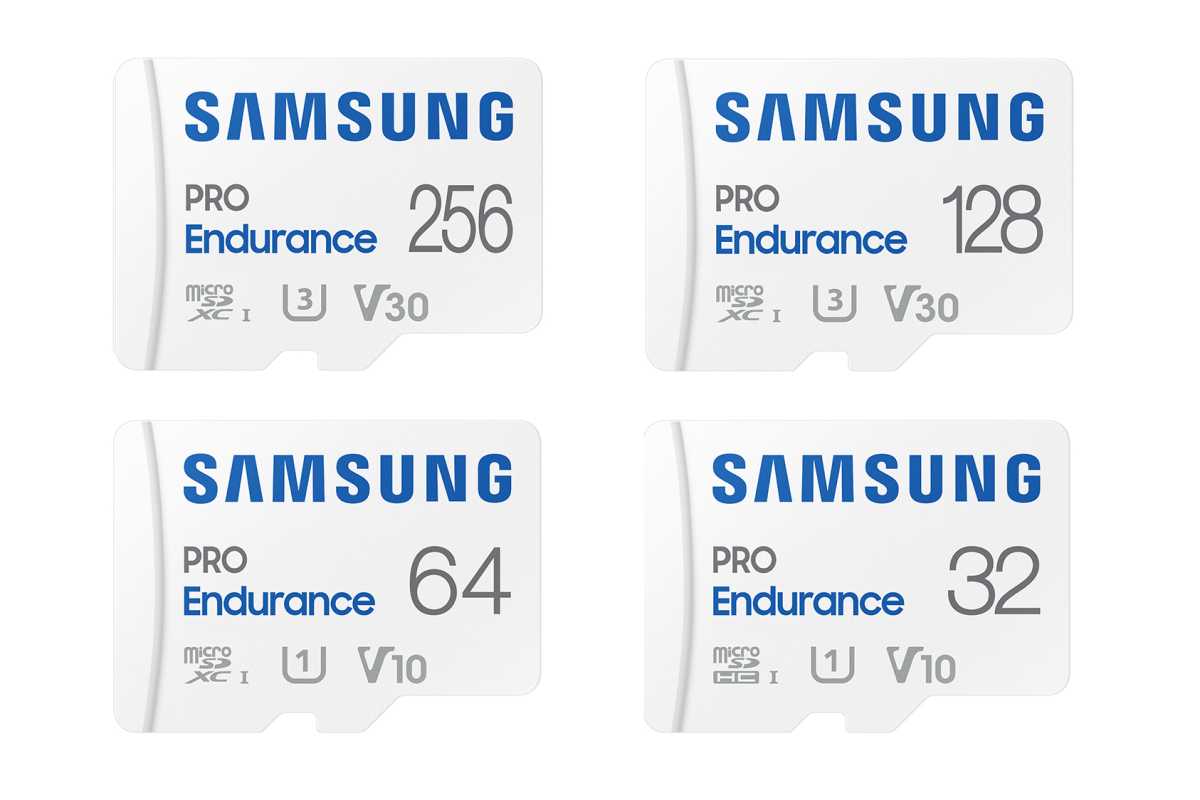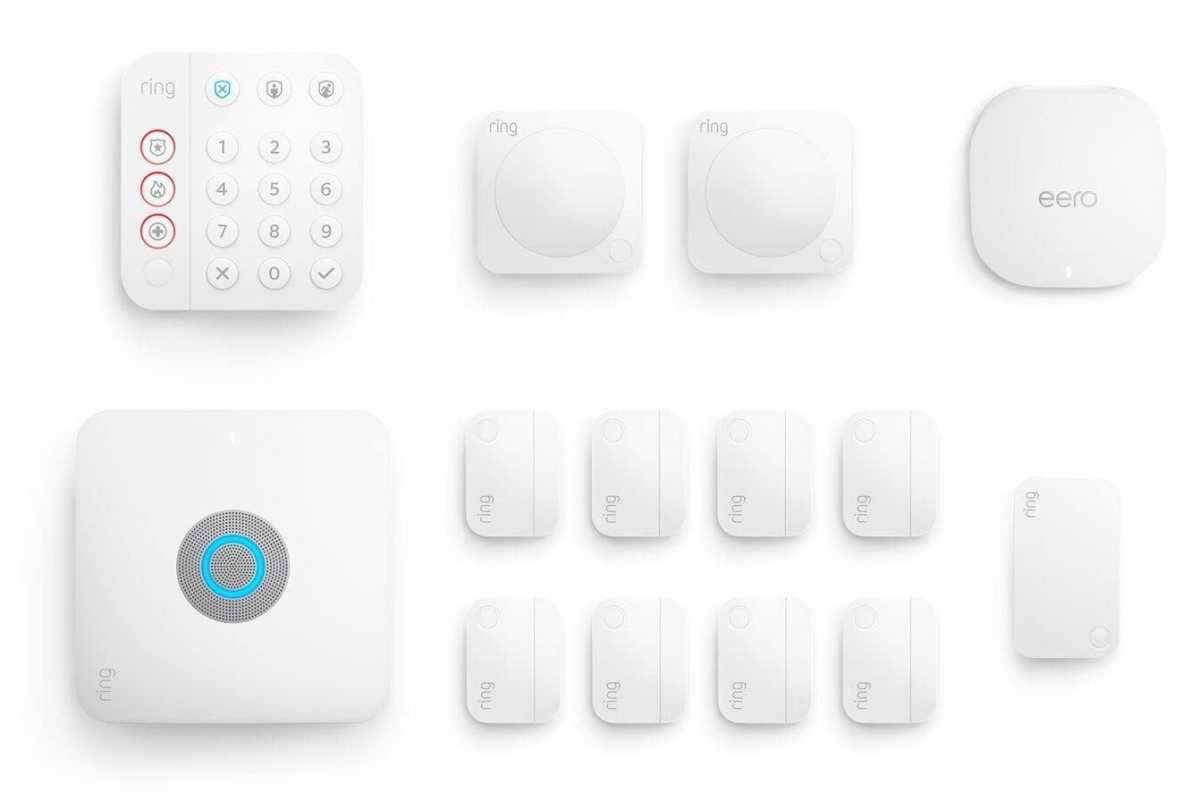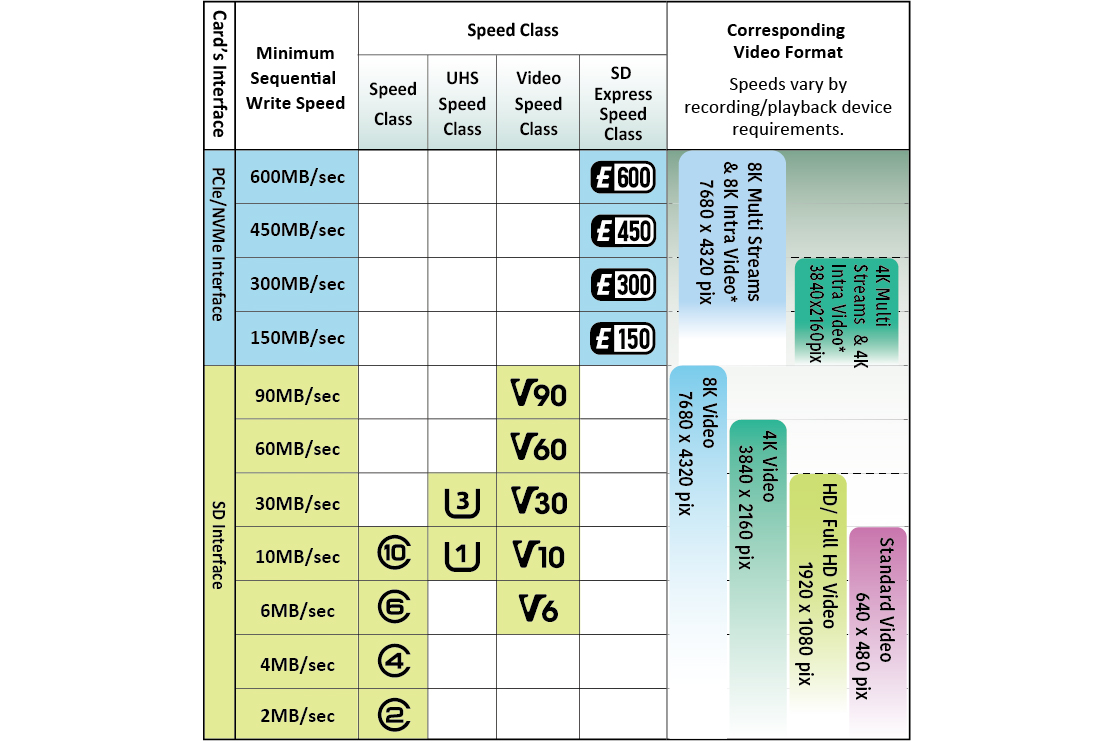Most home security cameras offer the convenience of storing video recordings in the cloud, but you’ll almost always need to pay for that service. If your camera also supports microSD cards (the acronym stands for secure digital) for storing video clips, you’ll need to buy a card, but that one-time purchase might allow you to escape the recurring cost of a subscription.
Many popular camera brands–including Reolink, Tapo, and Wyze–feature microSD card slots that allow you to store their recordings locally–i.e., on the camera itself–where you’re the only one who can access them. These and other manufacturers also offer subscriptions, both for convenience and to unlock other features, but microSD storage makes them truly optional–at least for storage.
Don’t miss TechHive’s recommendations of the best home security cameras.
Ring’s Ring Alarm Pro home security system has a microSD card slot, too. And in this case, the hub can store the video from all your Ring cameras and doorbells–as long as they’re Ring products. As an added benefit, all video processing is performed locally as well. In Ring’s case, however, you’ll still to sign up for its Ring Pro subscription plan, which costs $20 per month. But if you’re operating a Ring Alarm Pro, you probably already have a sub for professional monitoring.
If you’ve invested in a camera with a microSD card slot, or you want to take advantage of the local video processing and storage feature of a Ring Alarm Pro system, it’s important to understand the most critical features of microSD card technology, so that you can buy the best card(s) for your needs.
Here’s what to consider.
Why you need a microSD card for your home security camera
There is no disputing the convenience of cloud storage. It’s automatic, you don’t need to worry about making backup copies, and you can access your videos from anywhere you have broadband access. But there are downsides as well; most notably, there’s the added cost. Security camera manufacturers charge a subscription fee to store your camera’s data on their servers.
While $4 or $5 a month might not sound like much, those low fees typically cover just one camera; you’ll need to pay more for multiple cameras. And you’ll pay for that subscription as long as you own the camera and continue to use it.

When shopping for a microSD card for your home security camera, be sure to choose a model that’s designed for lots of write cycles and that can withstand the elements.
Samsung
The other downside of cloud recording is that if your home network connection is interrupted or your internet provider has an outage, your camera won’t be able to record any video. That’s more than an inconvenience; if an intruder to breaks into your home while your camera is offline, you won’t have any crucial video evidence of the crime.
Using a microSD card solves both problems, and you’ll only need to pay once, when you buy the card.
Local storage has other benefits, too. It enhances your privacy by keeping data on your device, rather than transmitting it over the internet and storing it on a server you don’t control. It also makes it easier to hand off forensic evidence to police investigating a crime. And unlike cameras that record video only when motion is detected, most cameras with local storage allow for continuous recording, automatically overwriting the oldest footage when the card fills up.
There is one big potential downside to relying solely on local storage: If a crook steals or destroys your camera, the evidence of their crime goes with the camera. For this reason, you might want to consider cameras that support both local and cloud storage. That way you’ll have a backup in the cloud if your camera and its microSD card are compromised.
What to look for in a microSD card for your home security camera
You’ll see a lot of features and classifications advertised on microSD card packaging. Here’s what’s most important in terms of home surveillance:

Ring
Capacity: The capacity of the memory card determines how much footage it can store before reaching its limit. The first step to figuring out how much capacity you need is to check the camera’s user manual or specifications to identify the card capacities it supports. This is listed as the highest capacity the camera will work with, as in “up to 512GB.” The most common microSD card capacities for today’s home security cameras range from 128- to 512GB.
Several factors can impact the card capacity you’ll need, but the two most important are your camera’s resolution and the type of recording you’ll be doing: motion-triggered or continuous.
Your security camera’s resolution directly influences the file size of recorded footage. Cameras with higher resolutions generate larger files, necessitating greater storage capacity. A security camera with a resolution of 1080p, for example, will produce video file sizes of 4- to 8GB per hour, while a 4K camera will produce file sizes of 8-16GB per hour. Simply put, the higher your camera’s recording resolution, the higher the card capacity you’ll need. Just remember to determine the maximum card capacity the camera can support.
How you’ll record video is also important for determining card capacity. Continuous, or 24/7, recording runs all the time and so produces large video files. With motion-based recording, the camera only captures video when it detects movement, so it produces fewer and smaller files. Be aware, though, that a high level of motion activity will result in more frequent video recordings and a greater number of files, so it’s important to calibrate your camera’s detection sensor and–if your camera supports it–enable intelligent detection that monitors for specific objects (i.e. people, cars, packages) while ignoring all others to maximize storage space.

microSD cards use a system of symbols and numbers to denote their speed class. Class 10 or UHS (Ultra High Speed) Class 1 (U1) or higher should be sufficient for cameras with 1080p resolution and up.
SD Association
Speed: microSD card speed rates are based on how fast they can read and write data to their memory cells. For security cameras, you should only be concerned with the latter, because insufficient write speed might lead to video skipping or sluggish performance.
Unfortunately, most security camera manufacturers don’t cite write-speed recommendations in their documentation, and the system of symbols and numbers card manufacturers use to denote speed classes is cryptic, to say the least. It’s easiest to just remember that Class 10 or UHS (Ultra High Speed) Class 1 (U1) cards or higher are recommended for security cameras with resolutions of 1080p and up, which describes most modern cameras.
Durability: SD cards have a limited number of write cycles. While consumer microSD cards can be used with security cameras, frequent recording can dramatically shorten their lifespans. If you plan to use your camera for continuous recording, it’s worth looking for a high-endurance microSD card. These specialized cards are built for continuous read and write cycles.
The Samsung Pro Endurance card (about $36 for a 256GB card on Amazon), for example, is rated for up to 140,000 hours of Full HD recording–about 16 years. That makes it highly suited to continuous video surveillance applications. Another good example is SanDisk’s MAX Endurance line of microSD cards. A 256GB card in that line sells for about $44 on Amazon.
Other cards are built to withstand severe weather and temperature conditions, making them ideal for outdoor cameras. Look for cards labeled as “high endurance” or designed specifically for surveillance. While your security camera should be able to protect the card from water incursion, it won’t be to do much about hot or cold temperature extremes.
The microSD cards we recommend for home security cameras
Choosing the right microSD card is an important decision that impacts both the functionality and cost-effectiveness of your home security camera. With an understanding of these critical card specs, you can be confident in making a decision that makes your home and your security video safer.
While we don’t test microSD cards, we can recommend these brands based on specs, the manufacturer’s warranty and general reputation, and our own experience with the products. We recommend buying a card with at least 128GB of capacity. The links below are for 128GB cards, but you can choose which capacity you want once you’re on the page:
- Samsung Pro Endurance, 128GB: $27.99 at Amazon
- SanDisk High Endurance, 128GB: $22.96 at Amazon
- SanDisk Max Endurance, 128GB: $36.68 at Amazon
- WD Purple SC Ultra Endurance, 128GB: $27.99 at Western Digital


